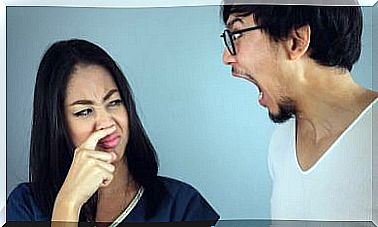Positional Vertigo: Prevention And Treatment
Positional vertigo is an anomaly that comes and goes in some people: it occurs spontaneously, disappears and reappears. Often times, it requires simple treatment that can be carried out in the doctor’s office.

Positional vertigo , also known as benign paroxysmal positional vertigo , is a common condition in people between the ages of 40 and 50. In more than 50% of those affected, the cause is unknown and in many cases it will go away on its own.
One in three people will experience simple vertigo at some point in their life. It is almost always temporary and has no major consequences. The disease was first described by Barany in 1921, and to this day there is no specific treatment for it.
It is estimated that 2.5% of the population will experience a severe vertigo attack at least once in their life. The incidence increases with age and up to 9% of those over 60 years old suffer from this type of problem; a visit to the doctor is essential for them.
What is positional vertigo?
Posing vertigo is defined as an illusion of movement, either in the surroundings or in the person himself. It manifests itself as a feeling of turning or movement of the body or the floor. It usually lasts only a short time; keep in mind, however, that this is a recurring problem.
We speak of positional vertigo when, after moving the head, the illusion of movement arises. This type of dizziness causes a feeling that can be mild to intense. While it is a bothersome problem, it is rarely of a serious nature.
There are two classifications of general vertigo: peripheral and central. Positional vertigo belongs to the peripheral type, it occurs most frequently and is harmless. Central vertigo is more severe and has to do with brain disease; the episodes there last longer and are usually more intense.

Detection of the problem
The basic symptom of positional dizziness is the illusory feeling of movement in the surroundings, which causes a certain loss of balance that most people define as dizziness or lightheadedness.
Sometimes it is accompanied by nausea or vomiting, a sensation of stuffy ears, a feeling like everything is turning around you, and drowsiness.
Most of the time, these episodes come on suddenly and last less than a minute. They are usually triggered by head movements and vary in intensity. The dizziness keeps coming back, but it can go away for a while and reappear later.
The doctor can usually make the diagnosis through a clinical discussion with a physical exam. If in doubt, he may order tests such as an electron nystagmography or video nystagmography, or even an MRI.
Preventive measures
In more than half of cases of this type of dizziness, it is impossible to determine the cause. In general there are no relevant risk factors. However, this problem is more common in people who have had the disease in their families, who have had ear infections, or who have suffered a blow to the head, even if it wasn’t severe.
Most cases are due to a problem in the inner ear. It has areas filled with fluid that move as soon as the person starts moving.
When small calcium carbonate crystals, also called otoliths or statolites, float in the liquid, the brain can perceive this as movement, even when the person is standing still.
Since this type of dizziness is directly related to moving the head , the best way to prevent it is to avoid quick or sudden head movements. It is also advisable to avoid stress and the consumption of substances that excite the nervous system.

Positional vertigo: treatment methods
There are medications that can help reduce dizziness. A procedure called the Epley Maneuver can also be effective in relieving symptoms. The aim is to remove the otoliths from the ear canals so that the sensation of movement no longer appears.
This maneuver is performed in the doctor’s office and consists of turning your head to the side on which the dizziness occurs. The patient then has to quickly lie on his back, after which the symptoms increase immediately. Then slowly turn the head in the opposite direction and the body in the same direction.
Finally, the doctor asks the patient to sit down and do the exercise again. Repeated use of this procedure will make the dizziness go away. He may return a few weeks later, requiring the technique to be reapplied.
A specialist will determine the need and frequency of the procedure, but that is not all. Those who experience repeated dizziness should undergo a full evaluation to rule out other more serious causes.









